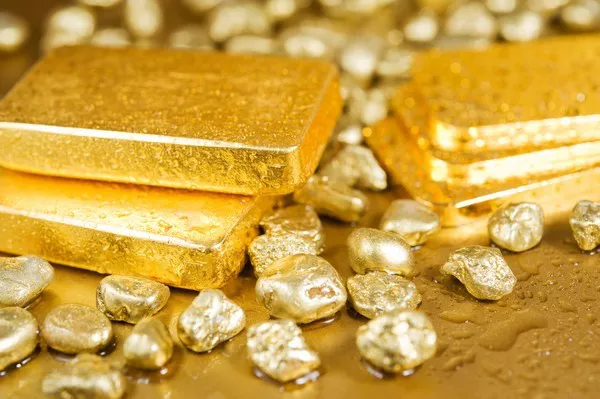Gold and silver, both precious metals with rich histories, have captivated humanity for centuries. However, the stark difference in their values has sparked curiosity and speculation. In this exploration, we delve into the factors that contribute to gold’s reign as the more valuable precious metal compared to silver.
Understanding Precious Metals: The Intrinsic Appeal
Before dissecting the reasons behind the value disparity, let’s establish a foundational understanding of what makes gold and silver precious metals.
1. Inherent Rarity and Scarcity: A Common Thread
Gold’s Rarity:
Gold is rarer than silver in nature. Its scarcity, combined with its chemical stability, has contributed to its historical allure. The limited supply of gold enhances its intrinsic value and desirability.
Silver’s Abundance:
Silver, while still considered a precious metal, is more abundant in the Earth’s crust. Its higher prevalence contributes to a lower intrinsic value compared to gold.
2. Historical Significance: Gold’s Timeless Allure
Symbol of Wealth and Power:
Throughout history, gold has been a symbol of wealth, power, and luxury. Its cultural significance spans civilizations, making it a coveted metal for adornment, currency, and as a store of value.
Silver’s Varied Roles:
Silver, although historically revered, has been more widely used for practical applications, such as coinage, jewelry, and industrial purposes. Its role as a monetary metal has been overshadowed by gold.
3. Industrial Demand: Silver’s Double-Edged Sword
Gold’s Limited Industrial Use:
Gold has limited industrial applications compared to silver. Its primary use lies in jewelry, investment, and as a reserve asset. This limited demand contributes to its stability and higher perceived value.
Silver’s Industrial Versatility:
Silver, on the other hand, is an excellent conductor of electricity and has various industrial applications, including in electronics and photography. While this versatility enhances its demand, it also makes silver more susceptible to economic fluctuations.
4. Store of Value: Gold’s Reliability Over Time
Gold as a Monetary Standard:
Gold has a long history as a monetary standard, anchoring the value of currencies and serving as a store of value. Its stability and resistance to corrosion make it an enduring choice for preserving wealth.
Silver’s Volatility:
While silver has also been used as currency throughout history, its higher volatility, susceptibility to tarnish, and increased industrial demand have led to a diminished role as a primary store of value.
5. Market Perception: The Psychology of Value
Gold’s Perceived Prestige:
Gold’s rarity, historical significance, and its use in luxury items contribute to a perception of prestige. The psychology of value often plays a crucial role in determining the worth of gold in the eyes of investors and collectors.
Silver’s Affordable Allure:
Silver, being more abundant and affordable, is often perceived as a more accessible precious metal. Its affordability, however, can sometimes detract from the perception of exclusivity associated with gold.
6. Economic Conditions: Sensitivity to Market Dynamics
Gold as a Safe-Haven Asset:
In times of economic uncertainty or inflation, gold often serves as a safe-haven asset. Its stability and historical role as a store of value make it an attractive option for investors seeking to preserve wealth during turbulent times.
Silver’s Volatility in Economic Shifts:
Silver, with its dual identity as an industrial metal, can be more susceptible to economic shifts. Its price may fluctuate based on industrial demand, making it less consistent as a safe-haven asset compared to gold.
7. Supply and Mining Dynamics: Extracting the Precious
Gold’s Deep Mining Challenges:
The process of gold mining is often more challenging and requires deeper excavation. This complexity contributes to higher production costs, further accentuating the rarity and value of gold.
Silver’s Widespread Mining:
Silver is often a byproduct of other mining operations, making its extraction more widespread. The relative ease of silver mining contributes to a larger supply, impacting its value compared to gold.
Conclusion: The Gilded Distinction Between Gold and Silver
In conclusion, the factors contributing to gold’s higher value compared to silver are woven into the very fabric of their individual characteristics and roles throughout history. Gold’s scarcity, historical significance, limited industrial use, and perception of prestige collectively contribute to its enduring status as the preeminent precious metal.
While silver, with its affordability, versatility, and industrial demand, plays a vital role in various sectors, its value proposition differs from that of gold. Both metals continue to hold unique places in our collective consciousness and the global economy, reflecting the complex interplay of nature, history, and human perception that defines their worth. The gilded distinction between gold and silver endures as a testament to the timeless allure of precious metals in the tapestry of human civilization.

